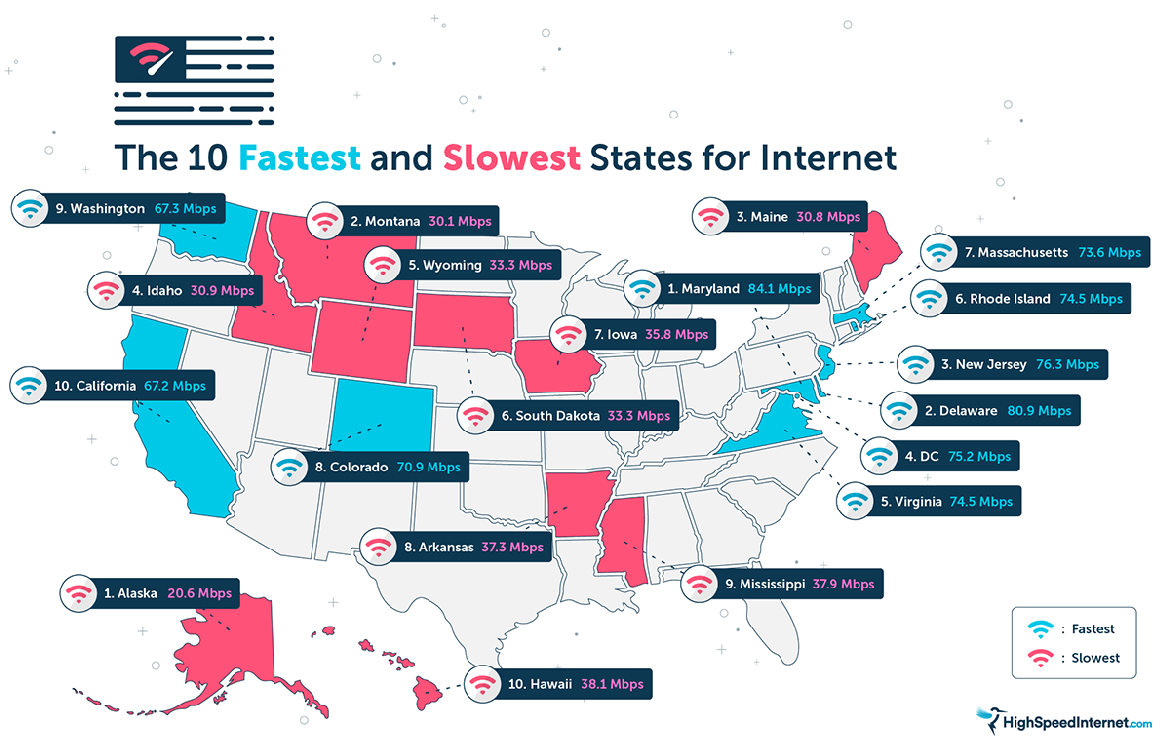Idaho internet? Still loading
A study from the consumer ratings website Highspeedinternet.com reports that Idaho has some of the slowest internet connectivity in the country.
“Social distancing” of the pandemic era has led to a meteoric increase in people telecommuting and video chatting. The demand for fast internet has never been greater, the website says.
Numerous companies track regional metrics of internet speeds as well as metrics for different companies and delivery options.
The recent study from High Speed Internet placed Idaho at fourth slowest in the nation. However, Coeur d’Alene had the fastest average speeds for any city in the state overall.
Internet speed is largely determined by the communications infrastructure in an area, such as high-speed fiber cables. Internet service providers, such as Spectrum and Frontier, require wire or fiber cables to increase speeds, which is difficult in rural and mountainous parts of the state.
James Martin, Kootenai County’s Director of Information Technology, said, “The speed is determined by the medium being used. Many rural internet users use satellite or have older connections.”
Idaho is taking measures to increase online speeds.
In May 2019, Gov. Brad Little established the Idaho Broadband Task Force to improve connectivity across the state. A 2019 report from a task force meeting in Coeur d’Alene stated:
“Available maps and data depict North Central Idaho as the largest unserved area in the state.” It also stated: “ISPs and government programs have invested hundreds of millions of dollars for broadband infrastructure over the past several years. Idaho projects and assistance applications have not scored high by federal agencies that provided funding for rural and unserved communities.”
The task force prioritized the I-90 corridor between Coeur d’Alene and the Montana border.
Since then, the Idaho Department of Commerce received $50 million from the federal CARES act, a general pandemic-related fund for telehealth and “overall well-being.” Ten percent of these monies were allocated for the Idaho Broadband Grant program to provide funding to public organizations, such as counties and tribal governments, to purchase broadband infrastructure. The program will prioritize communities with the slowest connectivity, as well as health clinics.
Mike Kennedy is President of Intermax, a company that brings fiber and microwave networks to rural North Idaho.
“We have about 20 projects to expand into the most rural areas,” Kennedy said. “During the lockdown, there was a 40 percent increase in usage, a heavy increase. Many areas have few people but there is a great need.”
Kennedy’s company uses mountaintop microwave radio towers, such as the Idaho Public Television tower on Canfield Butte, to transmit internet to hard-to-reach areas. Using a system called point to multi-point, these towers broadcast wireless internet to microwave radio receivers placed on a customer’s home.
“This is often the most efficient way to reach the difficult and expensive areas,” said Kennedy.
Rural internet users who don’t use land-based or microwave radio services often use satellites like HughesNet to connect to the Echo XIV Jupiter 2 satellite. There is a planned launch in 2021 of Jupiter 3, which, according to HughesNet website, will provide faster connections to rural net users.
Internet speed is measured by megabytes per-second (mbps). According to the High Speed Internet study, which surveyed all providers and devices, Idaho’s fastest average internet speeds are 30.9mbps. Wyoming and South Dakota were slightly faster with fastest average speeds of 33.3mbps.
Maryland was the fastest with 84.1mbps. Alaska came in as the slowest with 20.6mbps.

